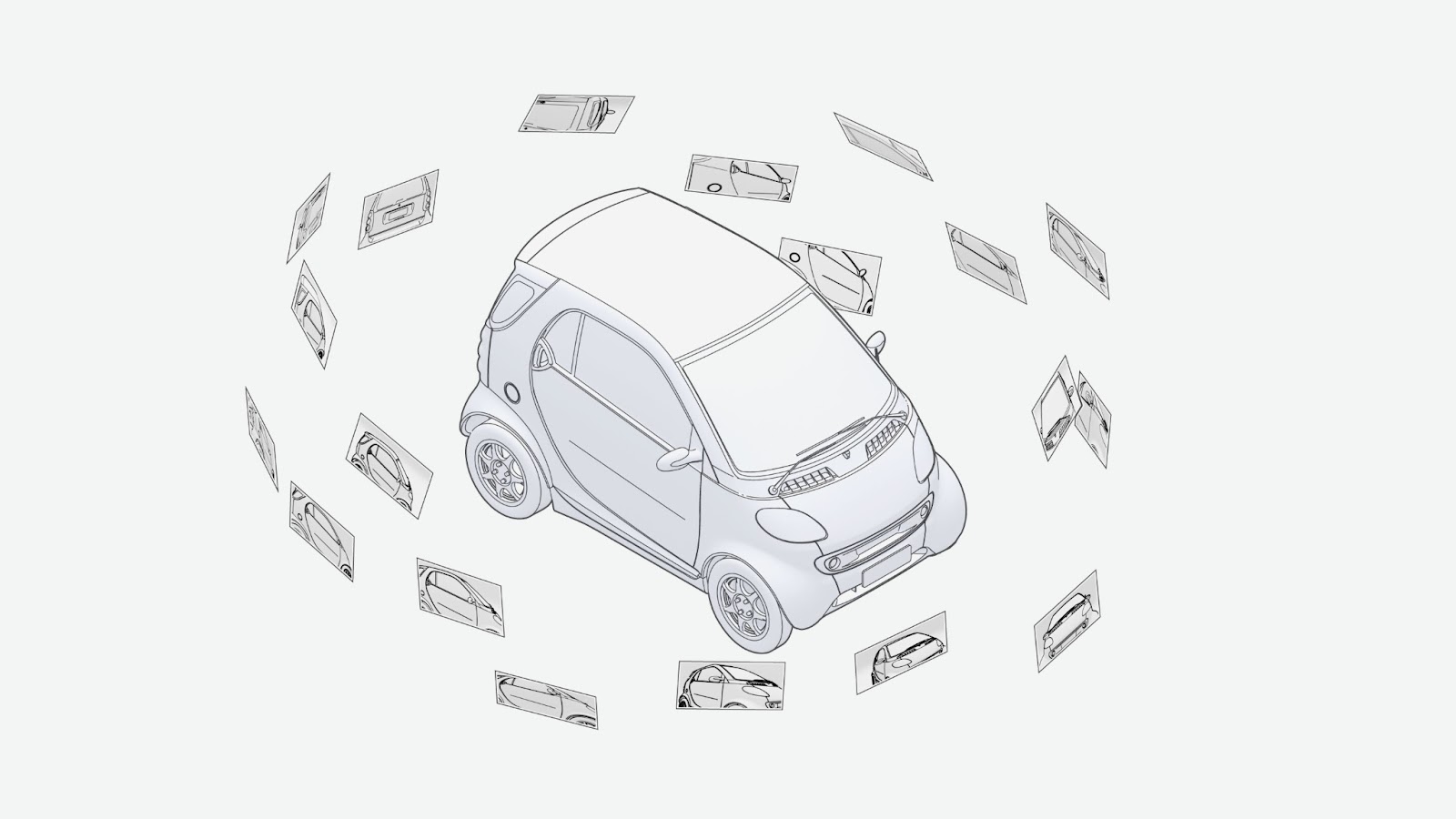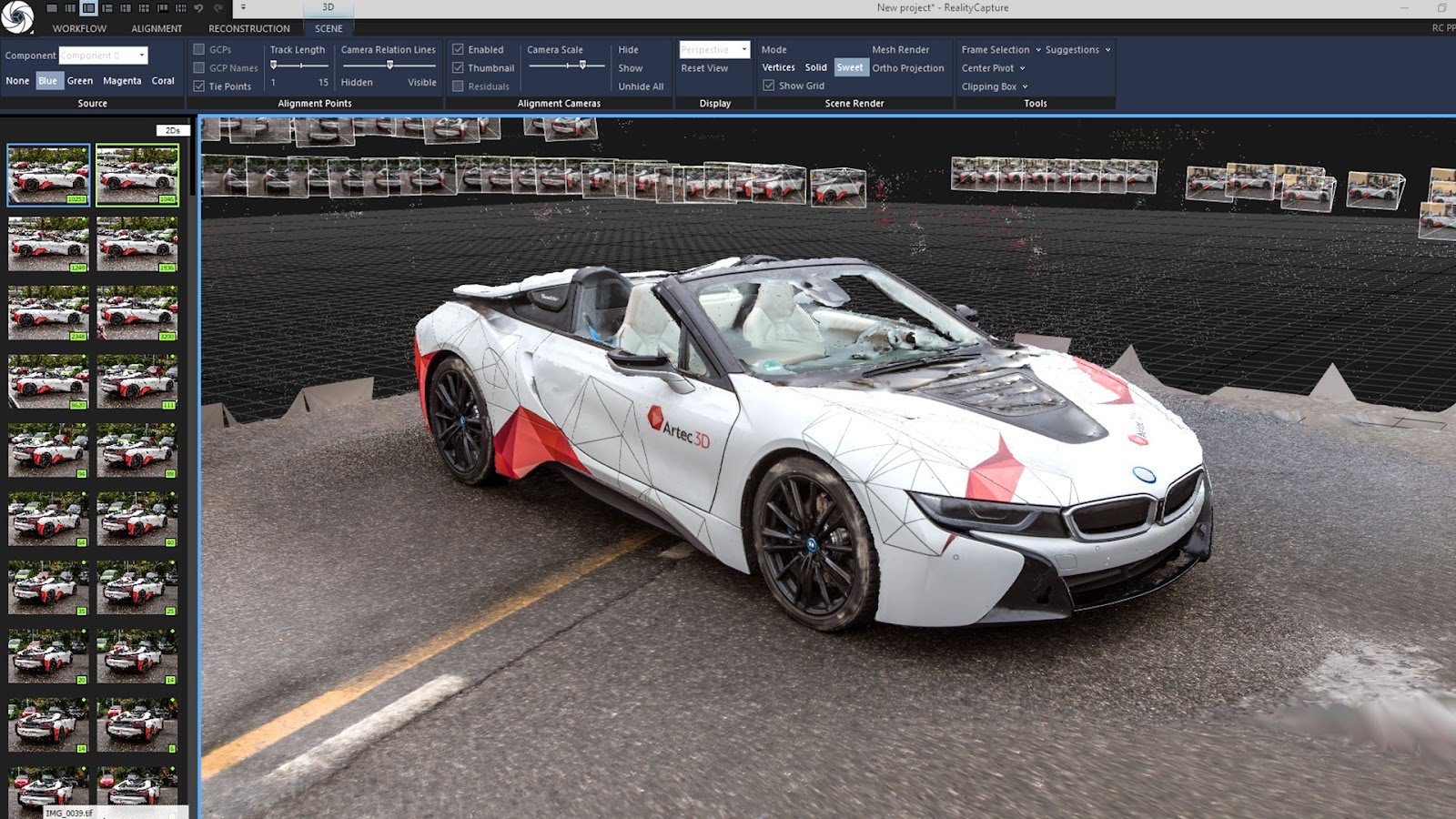With each new iteration, photogrammetry software is only getting faster, easier to use and delivering more detailed results.
There’s only one problem: the market is now becoming so competitive, users are spoilt for choice. How do you know which program to choose? Numerous factors come into play including learning curve, support, detail capture, file format, cost, and so much more.
If that sounds like a lot to process, it can be! But don’t let the initial barriers to entry put you off. Once you get your head around the basics, photogrammetry is fantastic for creating ultra-realistic 3D models of everything from objects to people and entire landscapes.
If you’re already familiar with the technology, you’re also in the right place. Our rundown covers the pros, cons, and applications of the best products on the market. You can get a better idea of how photogrammetry works here. If you already know the essentials, you’re ready to go.
Just a quick disclaimer before we get stuck in: the following is based on testing carried out by 3D Mag engineers. We’re by no means photogrammetry experts, but these are our genuine findings after a significant period of trial and error. We hope you find them useful!

Artec Studio
| Pros | Cons |
| Works with scans, photos & videoAccessible, easy-to-useExcellent geometry capture Professional mesh editing tools | Relatively new to market |
| OS | Import file formats |
| Windows 10 x64, Windows 11, Min. 8GB of RAM | BMP, JPG, PNG, TIF, MOV, MP4, AVI, M4A, M4V, 3G2, 3GP, 3GP2, 3APP |
Better known as 3D scanning software, Artec Studio is relatively new to the photogrammetry scene. But it’s already capable of delivering pretty impressive results that rival some of the more established players in the industry. With the introduction of AI Photogrammetry, Artec 3D has essentially opened its software to those who don’t own dedicated 3D scanners.
This means anyone with a smartphone can now use Artec Studio to create highly detailed 3D models. In fact, any photo or video data can be fed into the program’s neural network reconstruction algorithms, which create surprisingly detailed models from relatively small photo sets (as few as 80-100 images in size). Though scene capture is still in beta, the potential here is clear: fast, easy digitization on any scale – from tiny parts to entire landscapes.
We found Artec Studio’s user interface to be super user friendly. During testing, it proved easy to achieve high levels of geometry capture – almost reaching the level of Artec’s flagship 3D scanner, Artec Leo, and it delivered brilliantly detailed results.
Overall, Artec Studio AI Photogrammetry is a fantastic newcomer to the market that delivers outstanding results to newbies and experienced modelers alike. Those interested in giving Artec Studio a try can download the free demo here.
RealityCapture
| Pros | Cons |
| Strong community support Manual controls for pro usersUnreal Engine integration Supports some LiDAR scans | Steep learning curveOccasionally unclear UI |
| OS | Import file formats |
| Windows 7-11 x64, Min. 6GB of RAM | HEIC, BMP, GIF, ICO, CUR, JPEG, PNG, TIFF, DNG, WMPhoto, DDS, HEIF, WebP, JPEG-XL, AVI/QuickTime/Windows Media Video, MPEG, Leica Blk3D |
RealityCapture is one of the best known photogrammetry platforms on the market. Since it was acquired by Epic Games in 2021, the software has become better integrated with other CGI and video game modeling solutions. With LiDAR support, RealityCapture also continues to allow for data capture at scale, whether it be large objects or landscapes for lifelike special effects.
During testing, we fed demo photos into RealityCapture (admittedly, taken by a beginner). Importing this data was pretty straightforward, although we did occasionally find it difficult to find the right tool for a given task. This complexity can be daunting for complete newcomers, but there are plenty of resources on YouTube & Discord to help you nail down the basics.
The software’s in-depth feature set also allows for an impressive level of tinkering and workflow customization – especially for something that’s free to hobbyists and small business users. We found it didn’t deliver the same geometry capture as Artec Studio AI Photogrammetry managed based on minimal photo input. But with more images (particularly if these are taken with a high-resolution camera) and a bit of practice, it’s possible to achieve incredible realism.

3DF Zephyr
| Pros | Cons |
| Intuitive window prompts Fairly easy to grasp for newbiesLaser scan support | Limited mesh editing toolsetPricier than RealityCapture |
| OS | Import file formats |
| Windows 10/11, Min. 16GB of RAM | 3FR, ARI, ARW, AVCI, AVCS, AVIF, AVIFS, BAY, BMP, CAP, CIN, CR2, CR3, CRW, CUR, DCM, DCR, DCS, DDS, DIB, DNG, DPX, DRF, EIP, ERF, EXIF, EXR, FFF, GIF, GRAY, HDR, HEIC, HEICS, HEIF, HEIFS, ICO, ICON, IIQ, J2C, J2K, JFIF, JNG, JP2, JPE, JPEG, JPG, JPT, K25, KDC, MEF, MNG, MOS, MRW, NEF, NRW, ORF,MPEG, WMV, AVI, MP4, MOV, MPG, TS |
Compared to RealityCapture, 3DF Zephyr seemed a lot easier to use. This was down to the software’s well-worded and positioned prompts, which never left us wondering about the next step in the 3D model making workflow. Like Artec Studio AI Photogrammetry, it also allows users to create 3D models from videos, but photo-based modeling can get a little complicated.
Zephyr supports 16-bit square targets that need to be printed. Camera alignment is required for these targets to be detected, limiting the software’s potential for demanding use cases. On the flipside, the platform is available at many different price points, so users can choose the version that best meets their specific needs – for those with 50 photos or less, there’s even a freeware.
Switching up to the Lite or Monthly editions unlocks access to unlimited photo uploads, dual NVIDIA GPU support, more advanced editing tools, and laser scan support. All three editions feature a more accessible, icon-based menu system than Zephyr’s established competitors. But you don’t get quite the same level of 3D scanner support as in Artec Studio.
Agisoft Metashape
| Pros | Cons |
| Pretty good geometry captureCross-platform compatibilitySingle-payment plan Often updated with new features | Relatively slow and resource-intensive |
| OS | Import file formats |
| Windows, MacOS & Linux, Min. 32 GB of RAM | JPG, JPEG, JP2, J2K, PXL, TIF, TIFF, PNG, BMP, EXR, TGA, PGM, PPM, DNG, MPO, SEQ, ARA,AVI, FLV, MOV, MP4, WMV |
Previously known as PhotoScan, Agisoft Metashape is another of the mainstays in the photogrammetry industry. Though not quite as fast as RealityCapture, it still churns out realistic looking 3D models at a fair pace. Artec Studio AI Photogrammetry delivers better geometric data capture, but again, Metashape also captures object geometry reasonably well.
Day-to-day, it’s pretty intuitive and easy to use. You can filter images or switch to depth maps or masks in a single click and there are plenty of tutorials to help newcomers. Metashape also features cloud processing, Windows, Mac, and Linux compatibility, and a single-payment structure (so you don’t need to pay every month). This last point – in tandem with the regularity of its feature updates – really makes it stand out amongst its competitors.






Great article! Super helpful for anyone looking to get started with photogrammetry or compare the top tools out there.
I’m curious – how does Artec Studio’s AI photogrammetry compare to RealityCapture when working with complex outdoor environments?
Has anyone tried using 3DF Zephyr for large-scale projects? Wondering how well it performs compared to Metashape in terms of speed and accuracy.
Honestly, I’ve used RealityCapture for a few months now, and while it has powerful features, I think its learning curve and occasional UI issues really limit its potential for new users. It feels like the software was designed with pros in mind, but lacks the accessibility that tools like Zephyr or even Metashape offer right out of the gate. The Unreal Engine integration is great if you’re in that ecosystem, but otherwise it’s not a game-changer.
What really caught my attention in this article was Artec Studio showing up as a new player in the photogrammetry space. It’s interesting to see a big name in 3D scanning expanding into this area. Until now, it didn’t really make sense to look at Artec Studio unless you owned one of their high-cost 3d scanners – and that’s a pretty big investment. But now that they’ve introduced AI-driven photogrammetry and support for standard photo/video input, it opens the door to a much wider user base. Definitely curious to test it out and see how it performs compared to more established options.
That’s a fair point, and it’s definitely interesting to see Artec stepping into photogrammetry. But I’m a bit skeptical about how much traction they’ll actually get. At the end of the day, companies that focus solely on photogrammetry software – like RealityCapture or Agisoft – have been optimizing for this specific use case for years. Their development cycles, UI decisions, and feature sets are entirely shaped by that focus.
With Artec, I can’t help but think photogrammetry is more of an add-on to their core business, which is hardware. It’s hard to imagine their software getting the same level of attention and polish as tools built by teams who live and breathe photogrammetry full-time. Sure, AI features are a nice touch, but whether it’ll be enough to compete long-term is another question. They might win over a few users, but I doubt they’ll capture a significant share of the market.
Yeah, I hear you — and I actually agree to an extent. Dedicated photogrammetry software companies definitely have the edge when it comes to specialization and maturity. But at the same time, I wouldn’t completely write Artec off just yet.
They may be new to standalone photogrammetry, but they’ve been building software for years to support their high-end scanners. That means they’re not starting from scratch — they already have solid experience in mesh processing, 3D modeling, and building tools for capturing geometry. Add to that a healthy budget and a strong R&D track record, and you’ve got at least the potential for a competitive product.
Of course, time will tell — I’m not claiming Artec Studio will take over the space. But I do think it’ll be interesting to see how it evolves, especially if they continue investing in AI and improving accessibility for users beyond their hardware ecosystem.
Hey, surprised not to see Meshroom mentioned here! It’s free, open-source, and honestly one of the best entry points for anyone curious about photogrammetry without wanting to spend a fortune. Any reason it didn’t make the list? Feels like a solid option for hobbyists and indie creators.